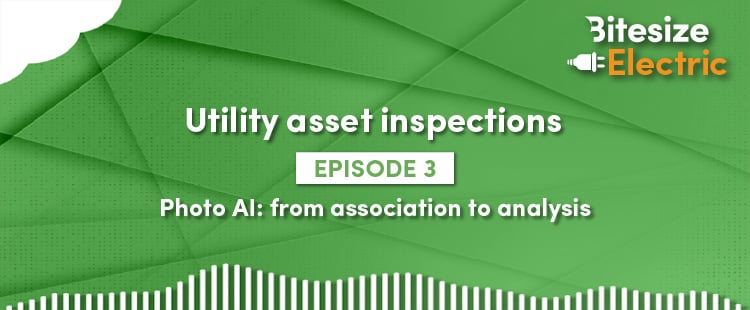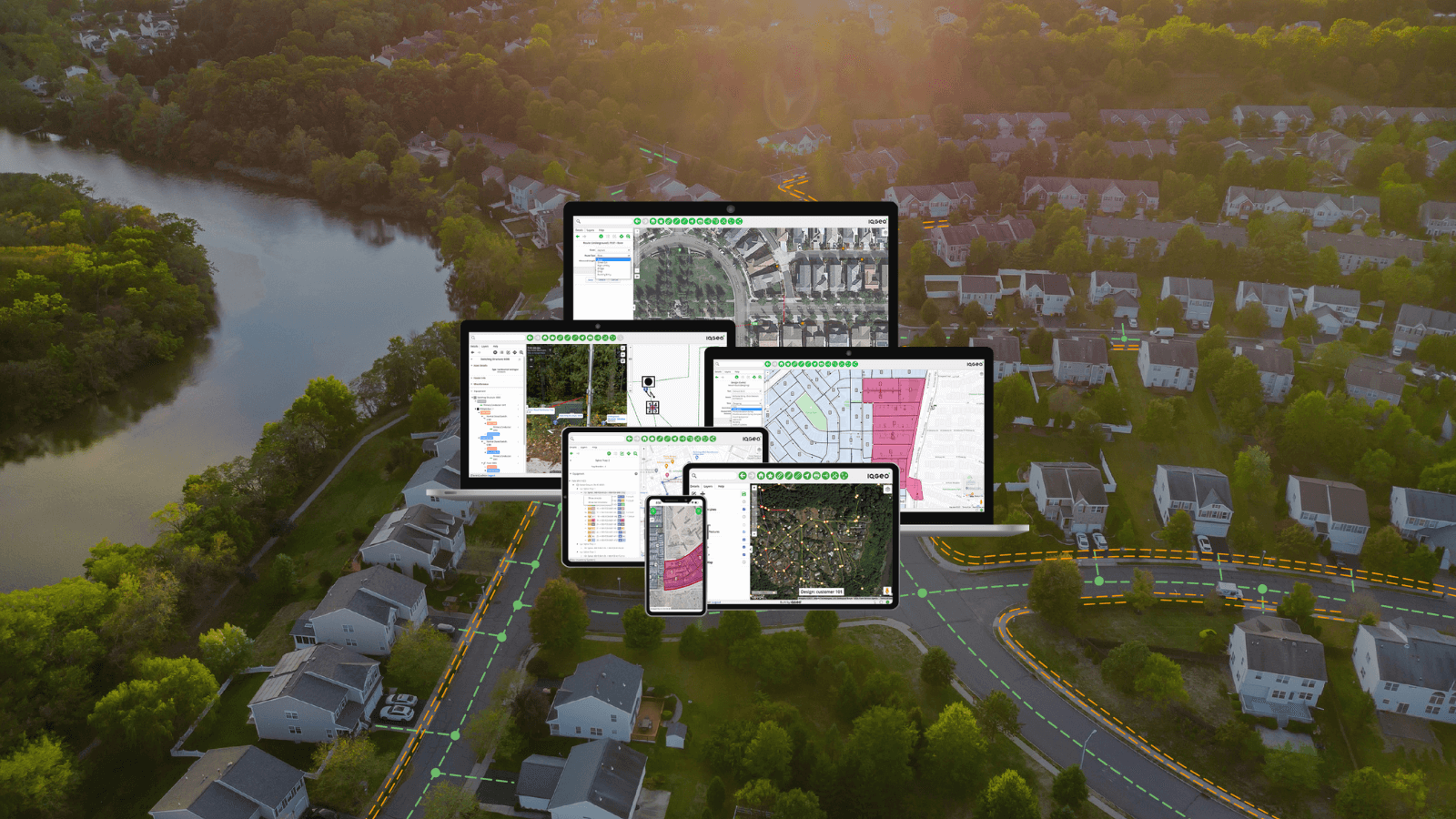Esri has been a fixture within most utilities throughout North America for the better part of three decades, and they deserve tremendous credit for forming and shaping the GIS industry. Over those three decades, the Geometric Network has been implemented hundreds of times. In recent years, the Utility Network and Utility Pipeline Data Model have been implemented across electric and gas utilities.
Taking your GIS to the field
For nearly two decades, IQGeo has been part of the journey. Utilities have used our Native Mobility solution to take their GIS (geographic information systems) to the field and create a unified office and field experience to execute work. Key benefits include:
One unified geospatial view – Ensure everyone works from the same accurate, real-time map
Reduce process debt – Streamline workflows and eliminate inefficient legacy practices
Reduce technical debt – Lower IT maintenance burdens by modernizing systems and tools
Connect the entire network lifecycle – From planning to maintenance, manage assets end-to-end
Maximize GIS investment – Get more value and performance from your existing systems
Here are just a few of many examples of how utilities are super-charging their network operations with IQGeo.
Seamlessly mobilizing multiple systems for utilities
At one multiservice utility serving over one million customers, their IT team had deployed two different GIS that the field teams relied on. When performing field work, the crews did not want to switch between their Esri mobile tool and their GE Smallworld mobile tool. They preferred the IQGeo approach: a single app to view and update the comprehensive network model. For their 500+ field users, IQGeo delivered an experience where each GIS could overlay one another and still enable the users to view and act upon each separately. If changes made in the field needed to go back to the GIS, the logic was configured to send those changes to the appropriate GIS – Esri or GE Smallworld.
As this utility undergoes an upgrade of their GIS, their field teams remain unaffected since they view details and make updates within IQGeo. While the GIS goes offline, the information loaded within IQGeo remains available, and any updates can be sent to the GIS when it’s back online. This protects hundreds of users from burdensome and costly change management.
See how a field user can make changes to an asset location on a tablet or smartphone and then sync those as-built changes with the GIS.
Data corrections in the field pushed back to Esri
Having an integrated field tool, capable of sending edits and redlines back to the source GIS for acceptance is crucial for data cleanliness for both GIS upgrades and interactions with downstream systems, like ADMS. Over the years, IQGeo has implemented various solutions based on our utility’s needs.
A gas client serving over 500,000 meters uses IQGeo to manage their gas leak survey program. A common occurrence in the leak survey process is to find and document data inaccuracies for both location and attributes that need to be sent to the GIS. Previously, this utility would document the edits and relay them manually to the GIS department, which took significant time – and often, never made it into the GIS for one reason or another.
During this project, IQGeo implemented an approach in which a field user who discovers a feature that needs correction can document it on a mobile device and sync the update for office review. The IQGeo office user then reviews and approves/declines the edit. If approved, the data correction is sent to Esri via Esri’s Feature Services for final processing. Once processed, the corrected features are available in IQGeo the next day.
For many IQGeo users, the standard out-of-the-box export tools like JSON, KML, DXF, and geopackage serve the purpose of moving data out of IQGeo and into other enterprise systems.
See how an office user can quickly access digital redlines that were performed in the field and then synced with the GIS.
Importing and exporting network data with FME
At more utilities, we are seeing the value in implementing Safe Software’s Feature Manipulation Engine (FME) for both ingesting data into IQGeo and processing exports from IQGeo. For network data coming into IQGeo, we have created and implemented FME workbenches for Esri’s Geometric Network, Utility Network and Utility Pipeline Data Model. These FME workbenches provide a repeatable and scalable method of giving each project a head start with the ETL process.
FME is also being used for data coming back to Esri. At two large Canadian utilities, IQGeo has implemented FME to process data changes back. For one of these utilities, field users document their data corrections, and those corrections are captured via an API endpoint that is processed by FME into their Esri model. At the other utility, inspection data generated within IQGeo is sent back to a geodatabase for record keeping.
Is your utility struggling with accurate field data?
Increasingly frequently, we hear that field users want a more seamless experience to execute their work. Giving them a single application to access all critical data has proven to simplify and accelerate their tasks, helping deliver accurate data, in real-time, to teams across the utility. With turnkey export and ETL tools, our customers have discovered unprecedented efficiencies in workflows across the lifecycle.
If your field teams need a better user experience, we’d love to show you how IQGeo can help.
Similar articles:




 Previous
Previous







